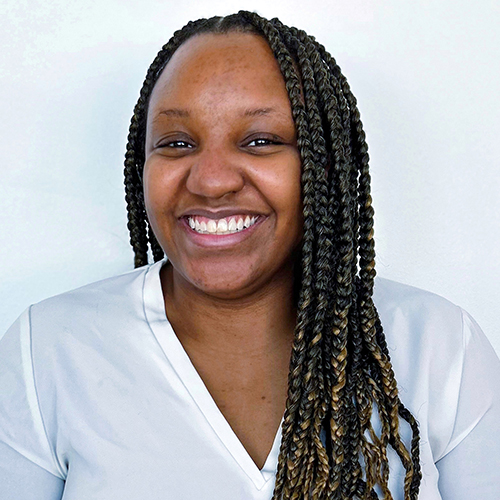Recently on Tik Tok, a growing number of mostly women have gone viral for documenting their Intrauterine device (IUD) insertion procedure. In many of these videos, the person getting the IUD shares their experience on the exam table screaming and crying, subsequently describing the procedure as the “worst pain of their life.” Research from 2022 found that of the 100 most viewed videos on Tik Tok that use #IUD, only 19% depicted a positive experience, while 38% depicted a negative experience. These horror stories regarding pain during IUD insertions even prompted the CDC to update their guidance regarding pain management during the insertion procedure. The negative attention surrounding IUD procedures on the internet has also led to the spread of disinformation on the effects of the IUD, and contraceptives in general.
While it’s important to allow people to share their lived experiences with accessing birth control, the overwhelming number of negative narratives can scare people away from using contraceptives at all. In a time of increasing attacks on contraceptives and declining contraceptive prescriptions, especially in states hostile to reproductive health care, we thought it was important to talk about our unique birth control journeys and how it changed our lives for the better. Birth control, and IUDs in particular, can be empowering and here are our stories on how:
Rolonda’s Story
 I first began my birth control journey at 17 years old. After expressing concerns about my painful menstrual period to my doctor and vaguely stating that I wanted ‘birth control’, I was given a prescription for the pill, without discussing other contraceptive options. I remained on the pill for 8 years, simply because my doctors refused to counsel me on other contraceptive options even though I asked for different methods of contraception.
I first began my birth control journey at 17 years old. After expressing concerns about my painful menstrual period to my doctor and vaguely stating that I wanted ‘birth control’, I was given a prescription for the pill, without discussing other contraceptive options. I remained on the pill for 8 years, simply because my doctors refused to counsel me on other contraceptive options even though I asked for different methods of contraception.
My early experience of receiving poor contraceptive counseling is a part of a long history of reproductive coercion against Black women. Since the creation of modern gynecology, Black women have been robbed of their reproductive autonomy, been experimented on and forcibly sterilized. Black women have also endured reproductive coercion, to prevent them from choosing if, when and how to expand their families.
After working as a reproductive health advocate and learning the history of reproductive coercion against Black women, I was empowered to switch health care providers to someone who I believed would better advocate for my needs. After expressing my frustrations with the pill, my new doctor asked me what I wanted from a contraceptive and we discussed the full range of contraceptive options. It was the first time someone had asked me what I wanted from contraceptives and allowed me to make an informed decision of my preferred method of family planning. Eventually I chose to get an IUD, a method of contraception that I had discussed with previous providers but never received.
I received my IUD on October 2, 2024. For the procedure I was prescribed misoprostol (a medication that can soften the cervix) and ibuprofen for pain during the procedure and cramping afterwards. Overall, my IUD insertion was relatively painless and it has granted me autonomy over my reproductive decision making. My IUD represents me taking charge of my reproductive decision making and choosing a contraceptive, particularly a long-acting reversible contraceptive, on my own terms, a choice I did not have when I was younger.
Emily’s Story
 My birth control journey started in seventh grade. At the time, my periods were intense – and often debilitating – so my gynecologist recommended that I go on the pill. I walked out with a prescription, and my monthly bouts of extreme pain evolved into a thing of the past. The pill worked wonders for me, and became a routine part of my teenage girlhood. Years later when I started college, my new friends raved about their IUDs. I was sold immediately. Choosing a hormonal IUD also meant my painful periods would be kept at bay. So, the summer after my freshman year, I returned to my gynecologist’s office for an IUD insertion. When I got my IUD in August of 2017, IUDs were on the rise – and the horror stories that paint social media were not as pervasive as they are today.
My birth control journey started in seventh grade. At the time, my periods were intense – and often debilitating – so my gynecologist recommended that I go on the pill. I walked out with a prescription, and my monthly bouts of extreme pain evolved into a thing of the past. The pill worked wonders for me, and became a routine part of my teenage girlhood. Years later when I started college, my new friends raved about their IUDs. I was sold immediately. Choosing a hormonal IUD also meant my painful periods would be kept at bay. So, the summer after my freshman year, I returned to my gynecologist’s office for an IUD insertion. When I got my IUD in August of 2017, IUDs were on the rise – and the horror stories that paint social media were not as pervasive as they are today.
I was so excited to never worry about taking a pill every day that I actually looked forward to the procedure, and I felt like I was in good hands with my provider. I was prescribed misoprostol and instructed to take ibuprofen before. The entire insertion took less than five minutes, and besides a few seconds of intense pressure during the insertion, the only inconvenience was some cramping for 24 hours. When my IUD expired in 2022, I had it removed and replaced with a new one on the same day.
The choice to switch to an IUD was easy and empowering for me. At the same time, I can’t ignore that as a white woman, my experience of pain is perceived differently by healthcare providers than the experiences of women of color, disabled women, trans women, and nonbinary folks. And, while I view my IUD as a symbol of freedom, contraception has been exploited and forced upon marginalized groups throughout history – so for many others, it carries a different kind of symbolism.
Conclusion
Every body reacts differently to hormones and pain. For many people, hormonal contraception is not the right fit, or the IUD insertion is too painful or uncomfortable. All of these experiences are real and valid. However, a narrative focused entirely on the negative is ripe for distortion, and can be used as fuel in disinformation campaigns that we’re seeing all over the internet right now.
So in honor of #ThxBirthControlDay, we felt compelled to share the positive experiences that we were lucky to have, and encourage others to share how birth control has positively impacted their lives. We are grateful for our birth control to help us combat debilitating period pain, allowing us to focus on our careers before starting a family, and empowering us to take control of our reproductive autonomy. Birth control is essential health care and must be accessible in the methods of one’s choosing to all that want it. Today we say #ThxBirthControl, and shout out to our IUDs!


